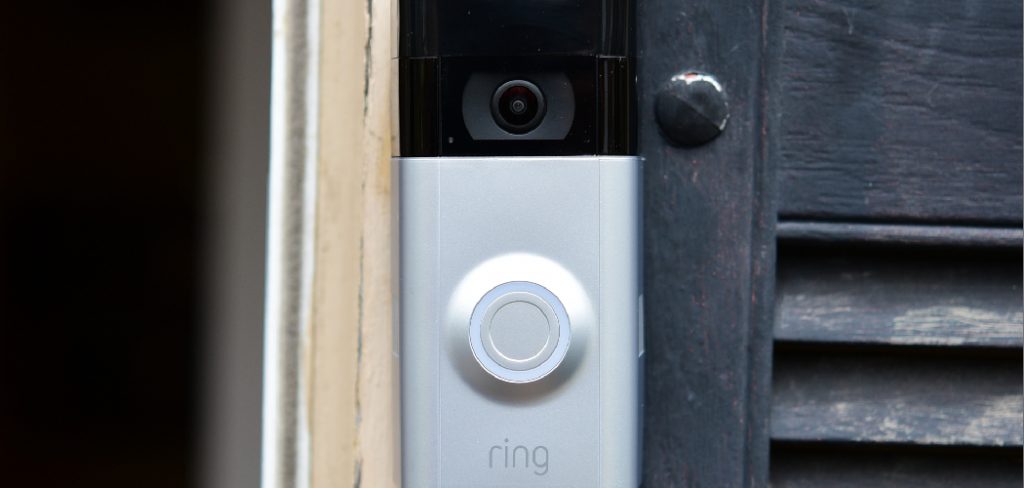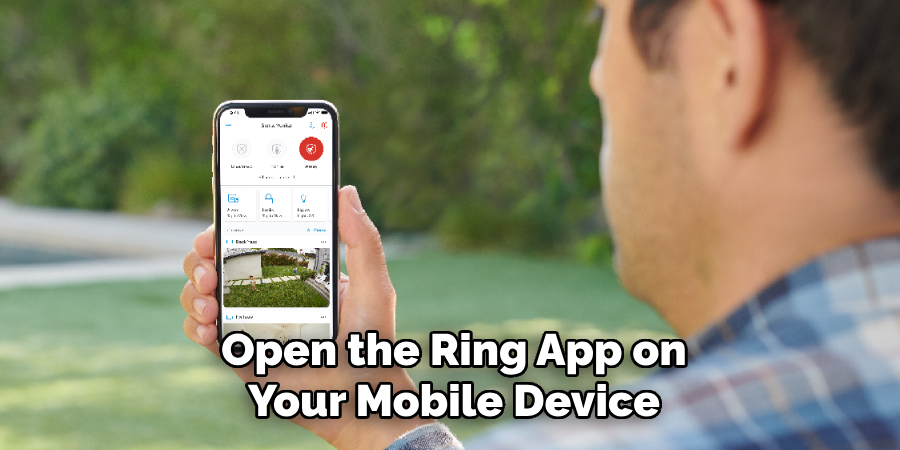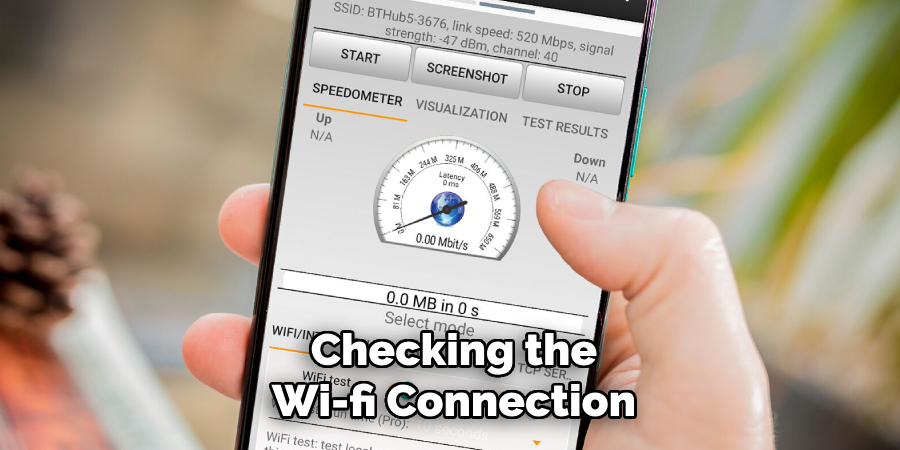Are you having trouble changing the owner of your Ring Doorbell? Maybe you recently moved into a new home and want to transfer ownership, or you’ve sold your Ring Doorbell and need to change the owner for the new user.

How to change owner of Ring Doorbell is a straightforward process that ensures the device is properly set up for the new user, whether you’re passing it on to a family member, selling it, or moving to a new residence. This transfer of ownership involves updating the account linked to the doorbell and ensuring security and privacy are maintained.
By following these steps, you can seamlessly transition the device to its new owner, allowing it to enjoy the full range of features and benefits the Ring ecosystem provides.
What Will You Need?
Before you begin the process of changing the owner of your Ring Doorbell, make sure you have the following:
- A stable internet connection
- A computer or mobile device with access to the Ring app
- The login credentials for your current Ring account
- The login credentials for the new owner’s desired Ring account
Ensure you and the new owner have access to these items before proceeding with the transfer process.
10 Easy Steps on How to Change Owner of Ring Doorbell
Step 1. Sign Out from Your Current Ring Account:
To begin the process of transferring ownership, you need to sign out from your existing Ring account. This step is crucial as it ensures that the Ring device is no longer associated with your account, freeing it up for the new owner to claim it under their credentials.

Open the Ring app on your mobile device or computer and navigate to the account settings section. Once there, look for the option to sign out. After signing out, it’s essential to inform the new owner that they can now add the device to their account. Remember that during this transition, the device may temporarily be unavailable for access through the Ring app until the new owner successfully sets it up.
Step 2. Remove the Device from Your Account:
Once you have signed out, the next step is to remove the Ring Doorbell from your account entirely. To do this, sign back into the Ring app with your credentials. Navigate to the device settings in your account where all linked devices are listed. Select the Ring Doorbell you wish to remove, then choose to delete the device. This action will disassociate the doorbell from your account, making it available for the new owner to claim. Ensure that this step is completed to ensure a clean handover of the device.
Step 3. Inform the New Owner to Set Up the Device:
After removing the device from your account, inform the new owner that they can now set up the Ring Doorbell under their own Ring account. They should start by downloading the Ring app and logging into their account if they haven’t already. Once logged in, they can add a new device by selecting “Set Up a Device” and “Doorbells” from the available options.

This will guide them through the setup process, ensuring that the device is properly connected to their app and is functioning correctly. Remind them to have their Wi-Fi network information ready, as the app will prompt for these details during the setup.
Step 4. Verify Device Installation:
Once the new owner has set up the device within their Ring account, they need to verify the installation’s success. They should start by ensuring the doorbell is functioning as intended, which involves testing the live video feed and ensuring that notifications are received correctly on their mobile device. It’s also advisable for the new owner to run a test motion alert to confirm that the motion detection feature is working correctly.
This step validates the successful transfer and allows the new owner to familiarize themselves with the device’s features and settings, ensuring a smooth transition and optimal use of the Ring Doorbell.
Step 5. Customize Device Settings:
After verifying the successful installation, the new owner should take the time to customize the device settings to suit their preferences. This includes adjusting the motion detection zones to minimize false alerts, setting up privacy zones if areas should not be monitored, and configuring notification settings to manage how and when they receive alerts.
Additionally, they may want to update the device’s name to something familiar and easily identifiable, especially if they have other Ring devices in use. These configurations ensure the Ring Doorbell aligns with the new owner’s needs and preferences, providing an optimal experience.
Step 6. Set Up Sharing Preferences:
Once the new owner has customized the device settings, it’s beneficial to configure sharing preferences. This allows them to grant access to friends, family, or household members who also need to monitor the doorbell. Within the Ring app, the new owner can invite trusted individuals by sending them an invitation to join as shared users.

This step is beneficial for households where multiple individuals wish to keep track of visitors and activity around the doorbell. The new owner should ensure that shared users have their Ring accounts for seamless access. Customizing access levels and understanding privacy controls are vital to maintaining security while allowing collaboration within the Ring ecosystem.
Step 7. Update Firmware:
The new owner should check for and install any available firmware updates to ensure the Ring Doorbell operates efficiently and remains secure. Firmware updates often include critical security patches, feature enhancements, and bug fixes that improve the device’s overall performance. In the Ring app, the new owner can navigate to the device settings and look for the option to update the firmware.
If updates are available, following the instructions to download and install them will keep the device up to date-and running smoothly. Regularly checking for updates is a good habit to maintain the functionality and reliability of the Ring Doorbell.
Step 8. Test the Connectivity:
After updating the firmware, it is essential for the new owner to test the connectivity of the Ring Doorbell. They should check that the device has a strong and stable connection to their Wi-Fi network, which ensures smooth video streaming and reliable alerts. To test this, the new owner can attempt to access the live view in the Ring app to monitor the speed and consistency of the feed. If there are connectivity issues, moving the Wi-Fi router closer to the doorbell or using a Wi-Fi extender can help improve the connection strength.
Verifying connectivity ensures that the device functions as intended and maintains communication with the Ring app, providing peace of mind to the new owner.
Step 9. Address Troubleshooting Issues:
If the new owner encounters any issues with the Ring Doorbell during or after installation, they should be prepared to troubleshoot effectively. Common troubleshooting steps include restarting the device by disconnecting it from power, checking the Wi-Fi connection, and ensuring the mobile device’s operating system and Ring app are up to date.
Consulting the Ring support website or contacting customer service can provide additional solutions and support for persistent issues. Addressing problems promptly ensures the Ring Doorbell continues to operate smoothly and maintains its security capabilities.

Step 10. Consult the User Manual:
It’s always helpful for the new owner to consult the Ring Doorbell user manual for any specific questions or detailed procedures related to their device. The user manual provides comprehensive information on device features, troubleshooting tips, and detailed setup instructions that can assist in resolving issues or enhancing user experience. This detailed reference can be invaluable for occasional technical queries or when advanced features are configured. Additionally, understanding the nuances and in-depth capabilities outlined in the manual can help maximize the functionality and security offered by the Ring Doorbell.
By following these steps, the new owner can ensure a smooth transition and optimal use of their newly acquired Ring Doorbell.
5 Things You Should Avoid
- Not Performing a Complete Device Reset: Before transferring ownership, performing a factory reset on the Ring Doorbell is crucial. Skipping this step can result in lingering personal data or previous settings that may interfere with the new owner’s setup.
- Ignoring Account Deactivation: Ensure the original account associated with the Ring Doorbell is wholly removed. If the original owner fails to deactivate their account, the new owner may be prevented from setting up their account seamlessly.
- Overlooking Privacy Settings: Transferring ownership without reviewing and updating privacy settings can lead to potential security concerns. It’s essential to clear any pre-set shared access and ensure that only the new owner and their trusted contacts have the necessary permissions.
- Failing to Share Installation Instructions: Provide all necessary installation guides or manual references before the new owner installs the Ring Doorbell. Lack of proper guidance can lead to improper setup, affecting device performance.
- Neglecting to Support the New Owner: It’s beneficial to offer support or resources to the new owner during the transition. Simply handing over the device without providing help can lead to confusion, especially for those unfamiliar with Ring products, which could result in a negative user experience.
Conclusion
In conclusion, how to change owner of Ring Doorbell involves a series of thoughtful steps to ensure both security and functionality are maintained.
By following a structured approach that includes resetting the device, properly deactivating the previous account, carefully managing user permissions, and updating firmware, new owners can seamlessly integrate the doorbell into their smart home ecosystem. It’s crucial to address technical or connectivity issues early and refer to the user manual or customer support when necessary. Avoiding common pitfalls and fostering an understanding of the device’s features enables a smoother transition and enhances the user experience.
This careful process not only helps the new owner fully utilize the Ring Doorbell’s capabilities but also ensures the device remains a strong element in protecting home security.
About
Safety Fic is a distinguished figure in the world of Diy design, with a decade of expertise creating innovative and sustainable Diy solutions. His professional focus lies in merging traditional craftsmanship with modern manufacturing techniques, fostering designs that are both practical and environmentally conscious. As the author of diy, Safety Fic delves into the art and science of Safety Fic-making, inspiring artisans and industry professionals alike.
Education RMIT University
(Melbourne, Australia) Associate Degree in Design (Safety Fic) Focus on sustainable design, industry-driven projects, and practical craftsmanship. Gained hands-on experience with traditional and digital manufacturing tools, such as CAD and CNC software.
Nottingham Trent University
(United Kingdom) Bachelor’s in diyfastly.com and Product Design (Honors) Specialized in product design with a focus on blending creativity with production techniques. Participated in industry projects, working with companies like John Lewis and Vitsoe to gain real-world insights.
Publications and Impact
In diy, Safety Fic his insights on indoor design processes, materials, and strategies for efficient production. His writing bridges the gap between artisan knowledge and modern industry needs, making it a must-read for both budding designers and seasoned professionals.
